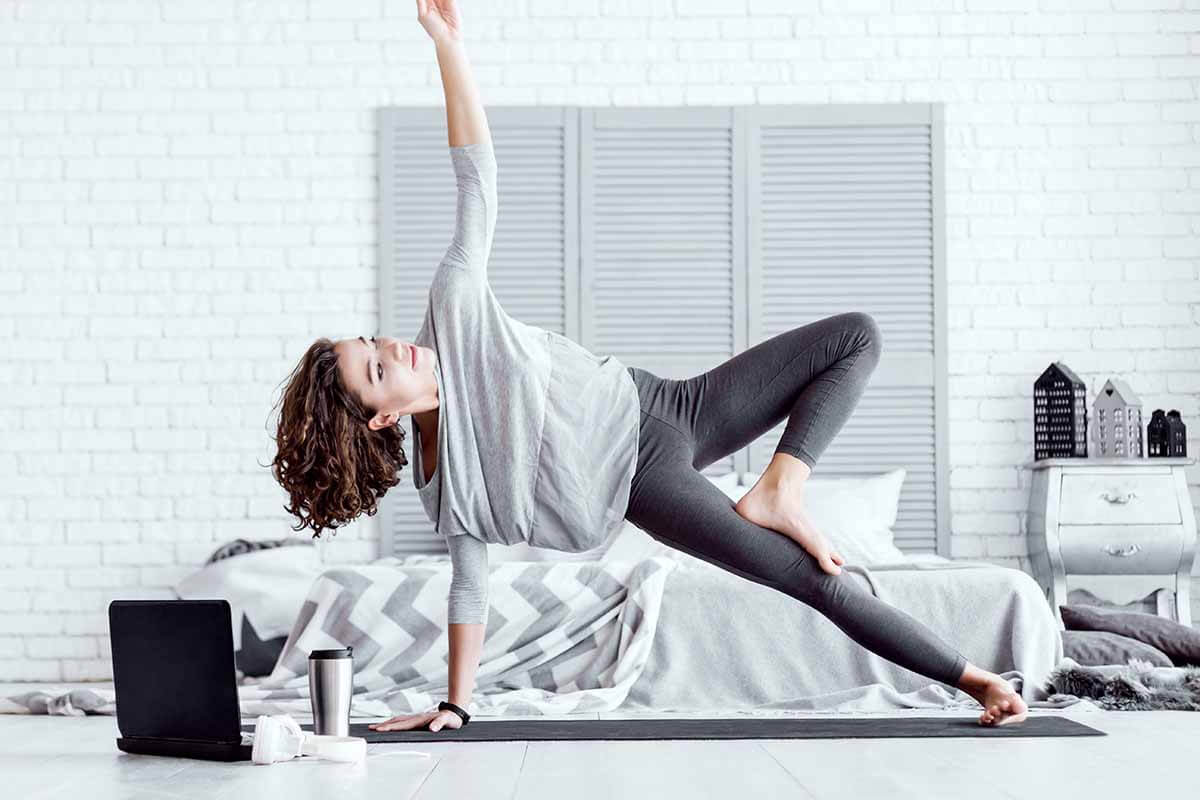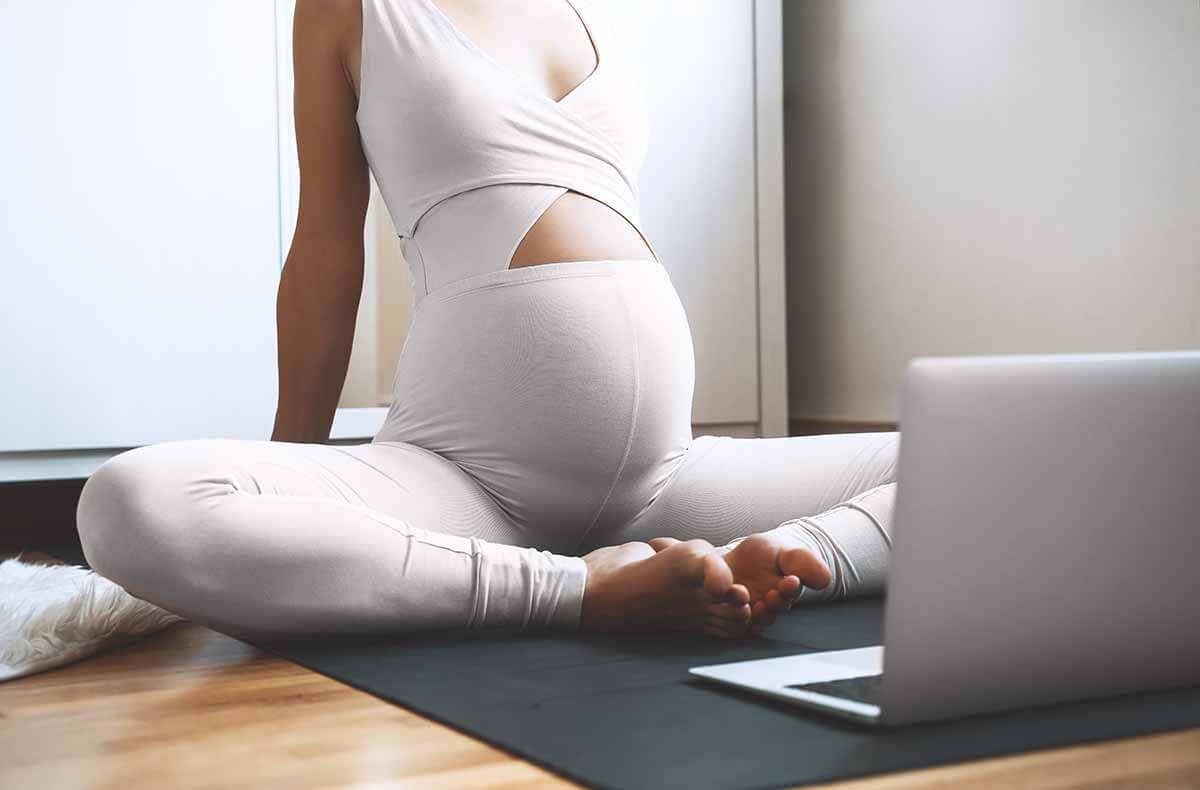
s you probably already know, motherhood begins before the birth of a baby—while the baby is still so tiny and secure within the womb. Moms want to protect their children long before the actual due date and often seek ways to keep themselves healthy so their baby can be healthy, too, including regular exercise. One common form of exercise for pregnant women is prenatal yoga, which includes a series of safe and gentle poses that can benefit both mom and baby.
Article Topics
Prenatal yoga only consists of poses that are safe for moms and their babies. Some examples of safe and gentle poses include:
If you have never practiced yoga of any type and want to start during pregnancy, it might be a good idea to take some prenatal yoga classes, either in-person or via YouTube before pregnancy, so you know what to expect. However, if you are at least a little familiar with the practice and want to learn about poses that will most benefit you and your little one, read on!
Article Topics
When Should You Start Prenatal Yoga?
So, now that you know there is a safe form of exercise you can do while pregnant—when should you start?
Fortunately, prenatal yoga is an exercise that can safely be done and continued through all trimesters of pregnancy and can be practiced as early as the beginning of the first trimester. However, waiting until the second trimester and after “morning sickness” to begin a daily prenatal yoga regime might be best for some women. (Source: Very Well Family)
What Yoga Poses Are Safe During Pregnancy?
You may not help but wonder if prenatal yoga is safe to do during your pregnancy. Should you really be twisting your body like that and turning yourself upside down? Should you really be standing on only one leg?
Rest assured, only safe and gentle yoga poses are practiced during a prenatal yoga class. This is because some traditional yoga poses are not safe to do during pregnancy for example, poses involving deep twists may put too much pressure on the belly or other organs in the body. In contrast, prenatal yoga uses safer forms of traditional poses, such as:
- Basic standing poses
- Open seated twist poses
- Hip opener poses
- Gentle abdominal poses
- Back stretches
However, despite how safe prenatal yoga is, it is always best to consult with a doctor before practicing. Women at an increased risk for preterm labor, heart disease, or back problems may not be able to do prenatal yoga.
5 Safe and Gentle Prenatal Poses
If regularly practiced, the following safe and gentle prenatal poses can improve your sleep, reduce your stress and anxiety, and decrease your lower back pain and nausea:
The Virabhadrasana 1 (Warrior 1) Pose
Sometimes worrying about how your baby is doing inside you can cause tension, and our muscles may get so tight they start to ache. The Virabhadrasana pose, also known as the Warrior 1 pose, is a basic yoga pose for beginners that will help ease the tension.
This prenatal yoga pose offers the following benefits:
- Stretches your chest and lungs, shoulders and neck, belly, and groins
- Strengthens your shoulders and arms, and the muscles of the back
- Strengthens and stretches your thighs, calves, and ankles
In a Warrior 1 pose, your arms are stretched upwards with hands pointed upwards. Your leg is bent forward in almost a lunge position while your back leg is kept straight. Your back is straight but slightly leaning forward.
Keep in mind your balance during pregnancy shifts. So, while this pose builds strength in your joints and muscles, it must be practiced cautiously until one gets used to the change in their balance.
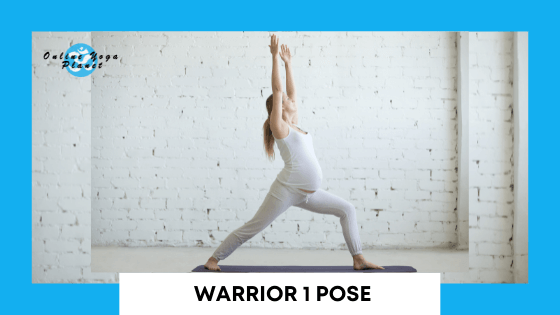
The Sukhasana Pose
Pregnancy can be so busy! Some of you, while pregnant, have professional jobs to hold down, chores at home to be done, meals to cook, and other children to attend to during the day. Oh, and don’t forget about the prenatal classes to attend, the nursery to decorate, the baby shower to attend, and those weekly doctor appointments.
Sometimes, you just need a few minutes to calm down and breathe slowly and meditate, escape and the Sukhasana pose can help. It also:
- Strengthens the muscles of your back
- Improves your body posture
- Relaxes your mind and body
You should be in a seated position for the Virabhadrasana (Warrior 1) pose. It is almost like a seated cross-legged position, only your legs are not crossed over. Your legs should be bent at the knees with the feet close to and facing the groin area. One foot is placed in front of the other one while the hands rest on the thighs.
It is also essential to keep your back straight. If this pose proves too strenuous for your back during pregnancy, it is suggested that you try the pose against a wall, a high sofa, or against a stack of large firm pillows.

The Paschimottanasana (Standing Forward Bend) Pose
How many old wives’ tales about pregnancy have you heard? Most likely, you’ve heard advice about sensing the gender of your baby or how best to stop your morning sickness. But what you rarely hear about is how to stop the depression and anxiety that sometimes seeps in.
The Paschimottanasana pose, also known as the standing forward bend, can ease this depression and anxiety. This classic yoga pose also helps:
- Relieve your stress
- Stretch your tight hamstrings, spine and shoulders
- Soothe your headaches and reduce fatigue
To do the traditional pose, you will need to sit on the floor (or on a padded mat) and bend forward. Your legs should be held together and stretched straight out in front with the feet placed together. Your hands should touch the sides of each foot.
However, as your belly begins to grow, you will need to adjust this pose accordingly to leave room for the baby. From this same position, start to place your feet a little wider apart. Place small pillows or yoga blocks under each of your hands for support.
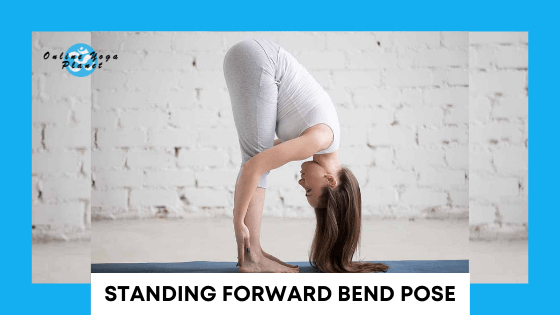
The Marjaryasana (Cat) Pose
During those busier days, your back may start to ache from bending over to retrieve that file at work, when you have to bend over to pick up your other child, or when you bend to carry that load of laundry. Luckily, the Marjaryasana pose (also known as the Cat pose) can ease your back pains.
This position looks akin to the image of a cat stretching its back upwards as it stands up. The cat pose will benefit you because it:
- Stretches your back, torso, and neck
- Stimulates and strengthens your abdominal area
- Opens your chest, which allows your breathing to become slow and deep
To do this pose, your feet, calves, and knees should be on the floor. Your spine and back should be rounded upwards with your arms straight below the shoulder, and your hands placed flat on the floor. Your neck and head should be bent downward. If done correctly, this pose will feel like a gentle massage to the spine.
Note: The Cat pose should be done only if it feels comfortable. This pose helps to stretch and strengthen your back it should not put more of a strain on it or feel uncomfortable.
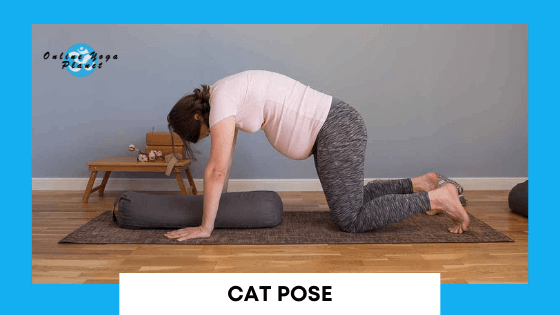
The Bitlasana (Cow) Pose
What? Oh, yes, that’s right—brain fog. It happens while you are pregnant and even after you’ve gone through labor. Slowly, it descends upon you like a natural morning fog drifting in. Maybe you cannot recall where you put your phone, or you cannot recall your banking PIN. Maybe you cannot recall when you are supposed to be somewhere.
Regardless of what you’ve been forgetting, the good news is the Bitlasana pose (also known as the Cow pose) is especially beneficial for both your body and your mind.
The Bitslasana pose also:
- Stretches your front torso and neck
- Provides you with a gentle massage to the spine
- Powers your brain and improves focus
This pose is similar to the cat pose (above) by beginning in the “tabletop” position. However, you should begin this pose by inhaling and pushing your belly down towards the floor, stretching your head and neck upward rather than downward.
Note: This pose often works best when done before or after the Cat pose. Also, like the Cat pose, only perform this move if it feels comfortable.

How Many Times a Week Should I Do Prenatal Yoga?
How many times a week prenatal yoga should be done depends solely on what your body is accustomed to and can tolerate. Prenatal yoga should always feel good, and each woman and pregnancy are entirely different. Some of you are accustomed to doing yoga, or some other form of exercise—often during the week—while others of you are not.
This is another reason why it is so important to consult your doctor before beginning any form of exercise during pregnancy. Your doctor will decide if it is safe to perform prenatal yoga and suggest how many times a week prenatal yoga can be safely done in your case.
In general, though, for most pregnant women, 30 minutes of moderate physical activity is okay to do seven days a week. Prenatal yoga is an exercise that is often recommended because it can safely help a woman stay in shape and prepare for the birth of her baby. Just keep in mind that you should never push your limits or try to do any physical activity that does not feel comfortable while pregnant.
If you feel inspired by prenatal yoga, you may want to consider become a teacher. You can even get a prenatal yoga instructor certification online.
What happens once the kid is here? Well there is yoga for them too! You can learn to teach that as well with a children’s yoga certification online!
Are there any poses to avoid in prenatal and postnatal yoga?
Certain yoga poses should be avoided or modified during pregnancy and the postpartum period to ensure safety and comfort:
Prenatal Yoga
- Deep twists: These can compress the abdominal area and should be avoided.
- Inversions: Inversions may cause dizziness or increase the risk of falling, so they should be avoided or practiced with caution and proper support.
- Lying on the back for extended periods: This position can restrict blood flow to the fetus and should be avoided, especially after the first trimester. Props can be used to support the upper body in a reclined position.
Postnatal Yoga
- Intense core work: Avoid intense abdominal exercises until the core has regained strength and any diastasis recti (abdominal separation) has healed.
- Overstretching: Relaxin, a hormone that increases flexibility during pregnancy, may still be present in the body, so avoid overstretching to prevent injury.
- High-impact poses: High-impact or strenuous poses should be approached with caution and gradually reintroduced as the body recovers.
Conclusion
How wonderful that prenatal yoga is so beneficial and safe to do while pregnant! In earlier days, pregnant women were often told not to exercise at all, this caused many pregnant women to become depressed during pregnancy and after the birth of their baby. However, today, it is known that prenatal yoga can help prevent and/or reduce the likelihood of post-partum depression.
Prenatal yoga is designed specifically for pregnant women. It addresses concerns that arise during pregnancy, such as anxiety, stress, nausea, back pain, shortness of breath, and general all-over aches and pains. It can also improve sleep, relieve headaches, increase strength and flexibility, and better the endurance of the muscles needed for labor. With all the benefits of prenatal yoga, why not give it a try? Start with any of the basic poses we covered above!
(Know someone who is about to be a grandparent that might want to try yoga for themselves? Check out online yoga for seniors!)

